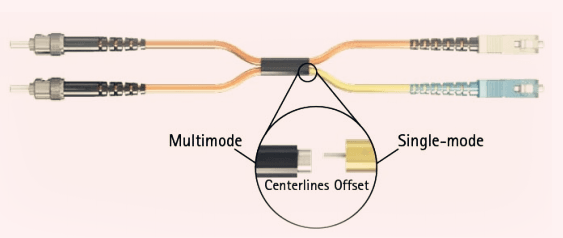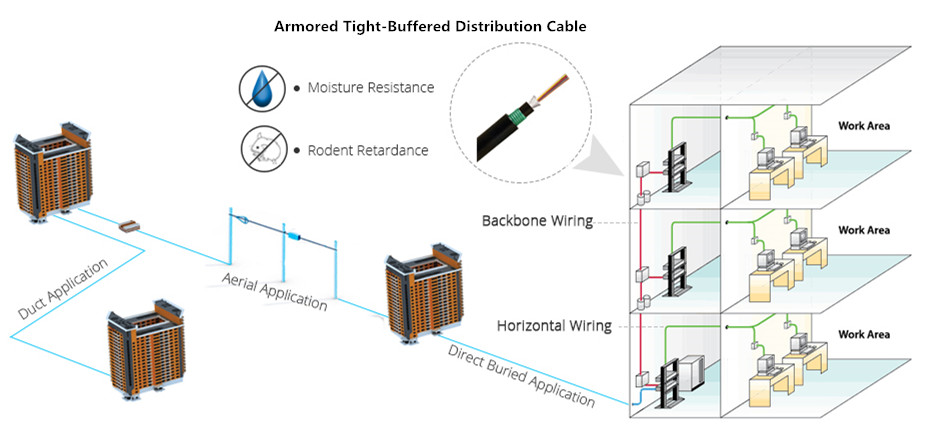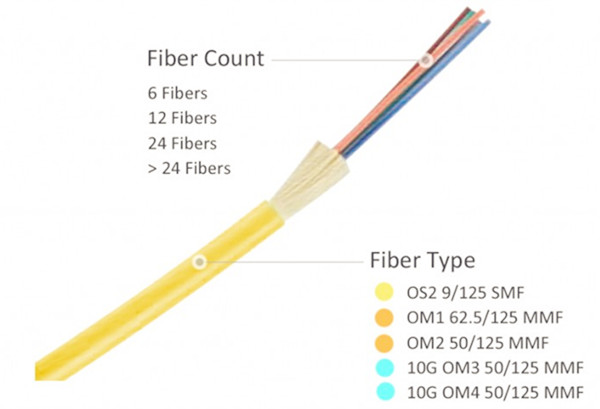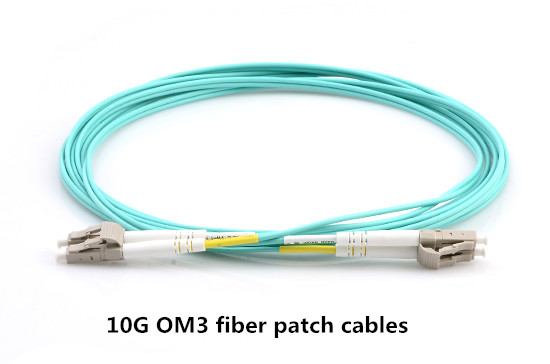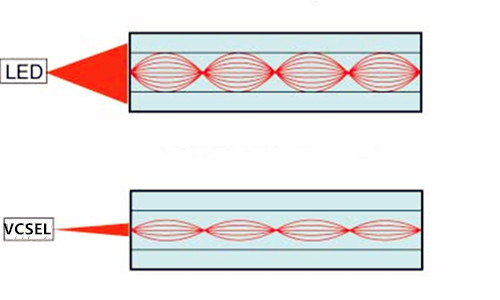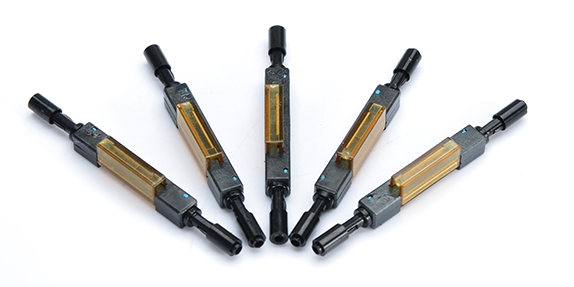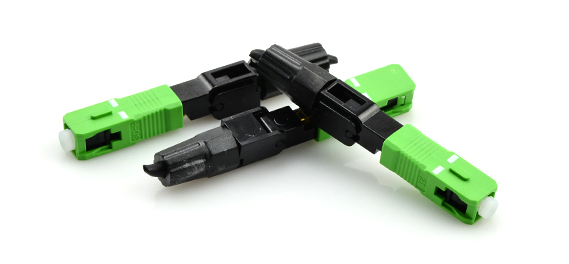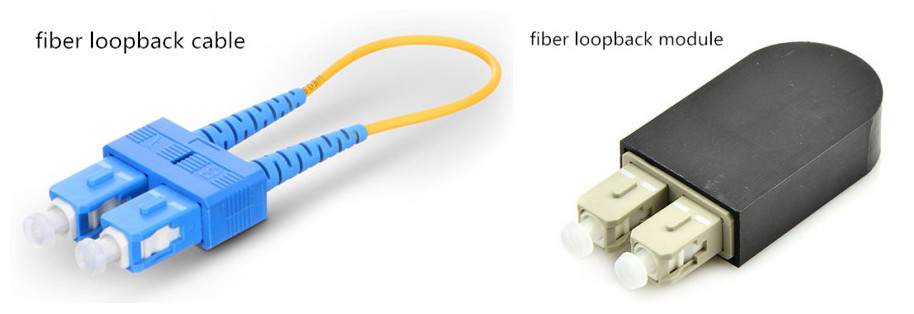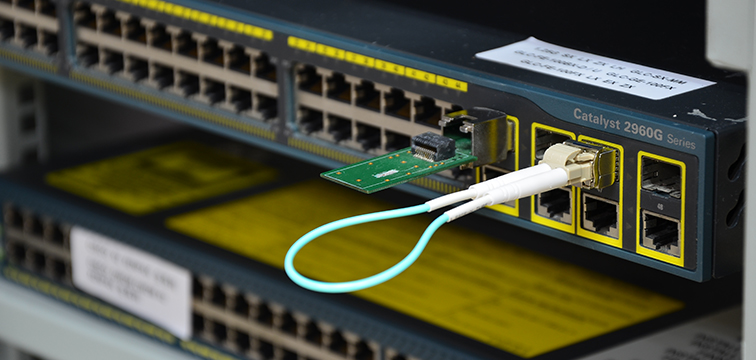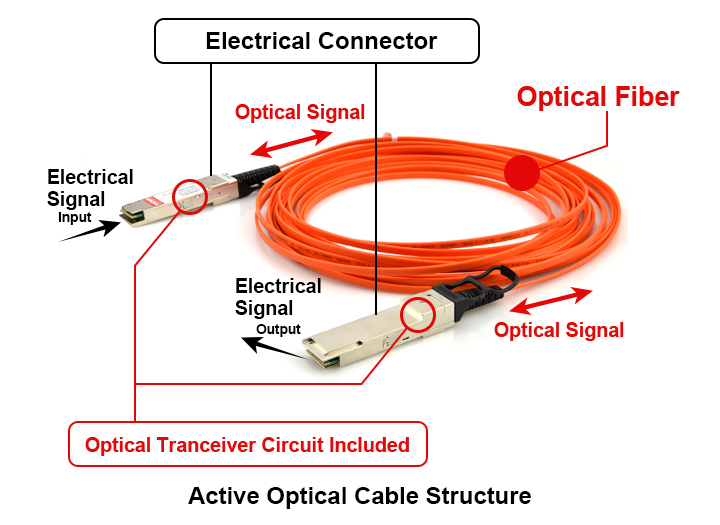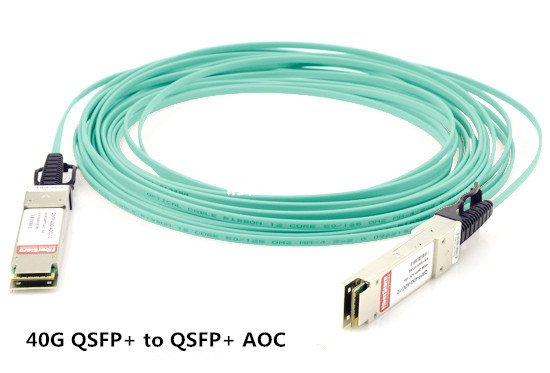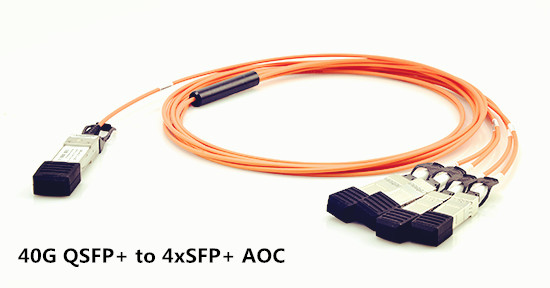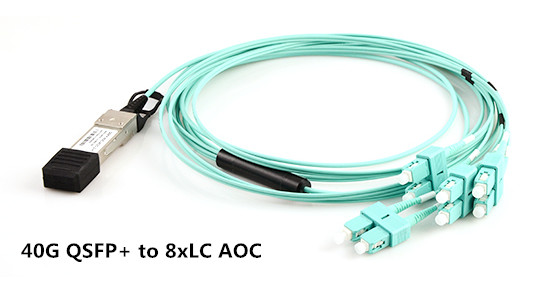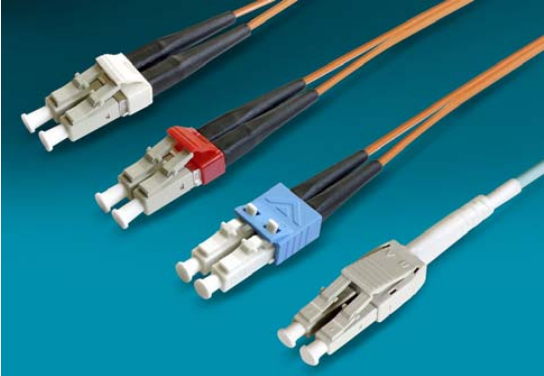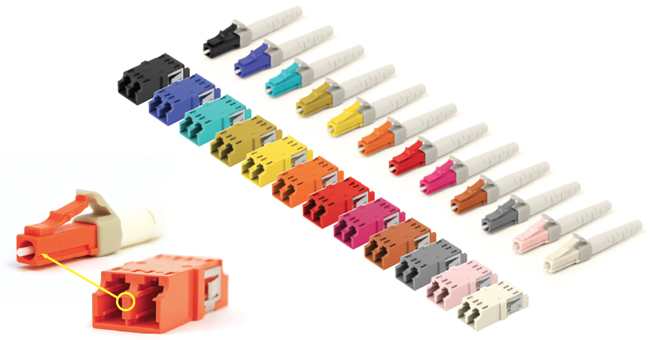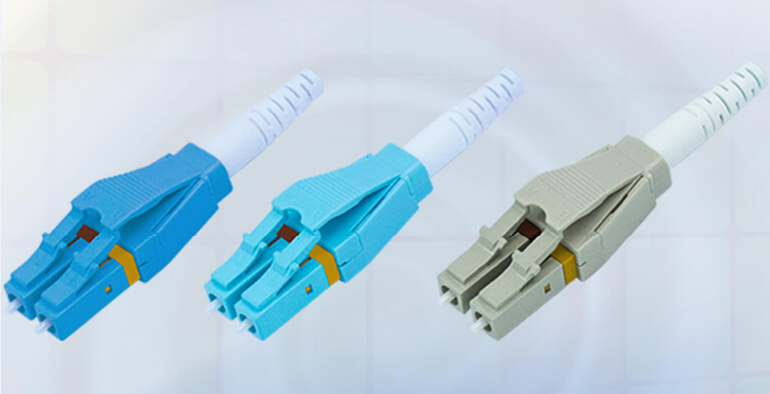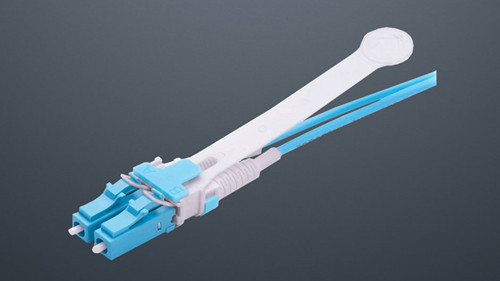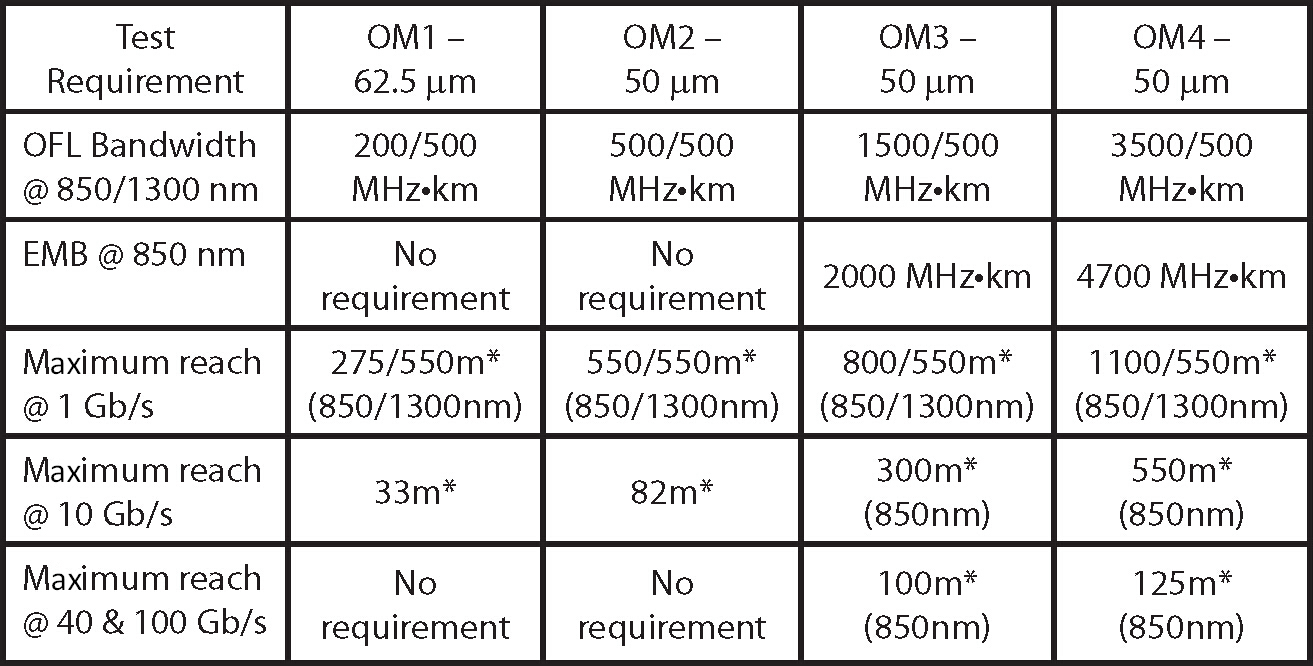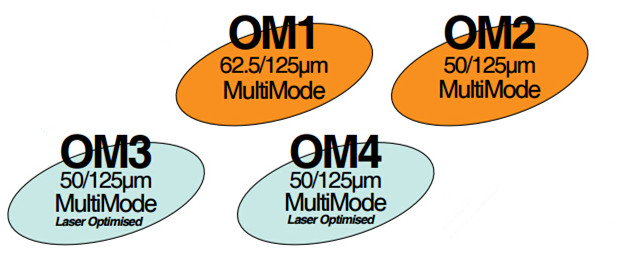The market turning to 40G/100G transmission is imperative in today’s gigabit Ethernet applications. MTP cabling assemblies, with their overwhelming advantages, provide a fast, simple and economical upgrade path from 10 Gigabit to 40 or 100 Gigabit applications. As we all know, 40G/100G gigabit Ethernet backbone networks often use 8-fibers per channel, which means most existing equipment doesn’t utilize fibers fully in 12-fiber cabling systems. Today this post will introduce a type of MTP fiber cable—MTP conversion cable which can overcome the problem mentioned above.
12-fiber MTP connectors are popular in the past years. And most backbone networks deploy the 12-fiber cabling systems. But with the quick development of optical transceivers, for 40G/100G gigabit applications, many transceivers that are guiding the industry from 10G to 40G and100G utilize only eight fibers. Then the problem arises. However, MTP conversion cable allows users to convert their existing MTP backbone cables to an MTP type which matches their active equipment. It’s a low-loss alternative to conversion modules because they eliminate one mated MTP pair across the link. There are mainly three types of MTP conversion cable on the market: 1×2, 1×3 and 2×3 MTP conversion cable.
This MTP conversion cable has a 24-fiber MTP connector on one end and two 12-fiber MTP connectors on the other end. It is used to allow existing 10G MTP 12-fiber trunk cables to carry 40G/100G channels. The 40G/100G signal is split equally across two 12-fiber trunks which were previously installed within a traditional MTP modular network.
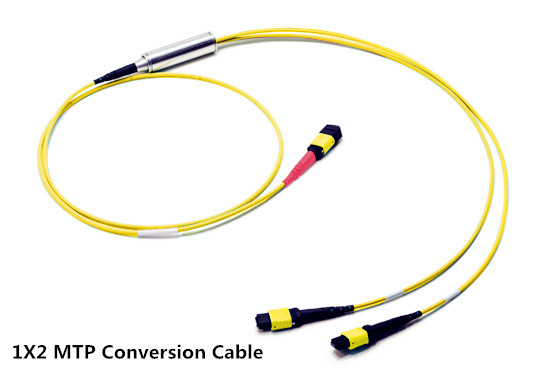
Like the 1×2 MTP conversion cable, this conversion cable also has a 24-fiber MTP connector on one end. But the other end comprises three 8-fiber MTP connectors, which is different from the former type. This MTP conversion cable allows users to convert their 24-fiber backbone trunks into Base-8 connections so that 40G rates can be achieved easily. A Single Base-24 connection is split out to three Base-8 connections, giving users three 40G ports.
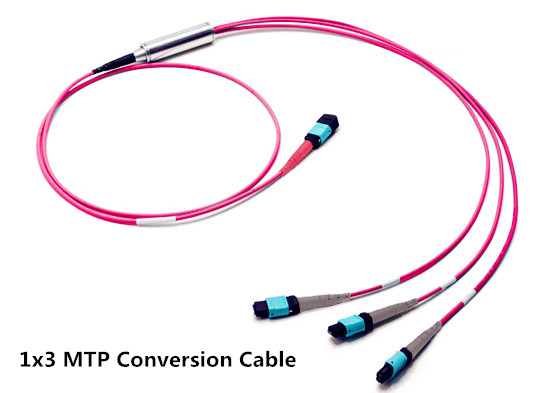
For users who have already installed a 10G MTP based network using 12-fiber and 24-fiber trunk cables and modules, this 2×3 MTP conversion cable can provide the conversion from 12-fiber to 8-fiber connectivity for full-fiber utilization, especially allowing for maximum use of existing fibers when converting to 40G channels. Because the conversion cable has two 12-fiber MTP connectors on one end and three 8-fiber MTP connectors on another end. They are available in either direct or crossed polarity for fast deployment using polarity management method A, and polarity can be reversed on site, offering enhanced flexibility & operability.
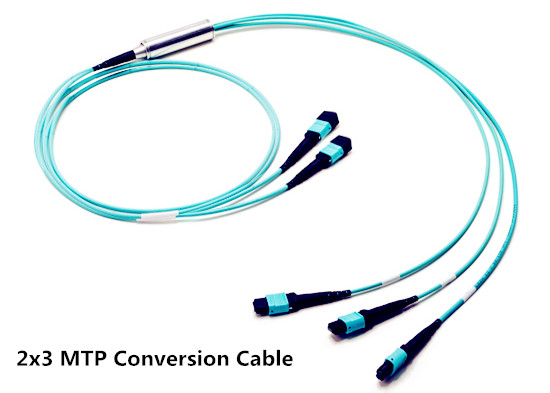
The 40G/100G MTP conversion cables eliminate the wasted fibers in current 40 gigabit transmissions and upcoming 100 gigabit transmission. Compared to purchase and install separate conversion cassettes, using MTP conversion cables is a more cost-effective, lower-loss option. Here are three application examples.
As shown in the picture below, two 40G/100G switches are connected by 1X3 MTP conversion cables (one 24-fiber MTP connector on one end and three 8-fiber MTP connectors on the other end), 24-fiber MTP trunk cable and MTP adapter panels. With this MTP conversion cable, less fiber cables are required. That brings more conveniences for cable management in data centers.
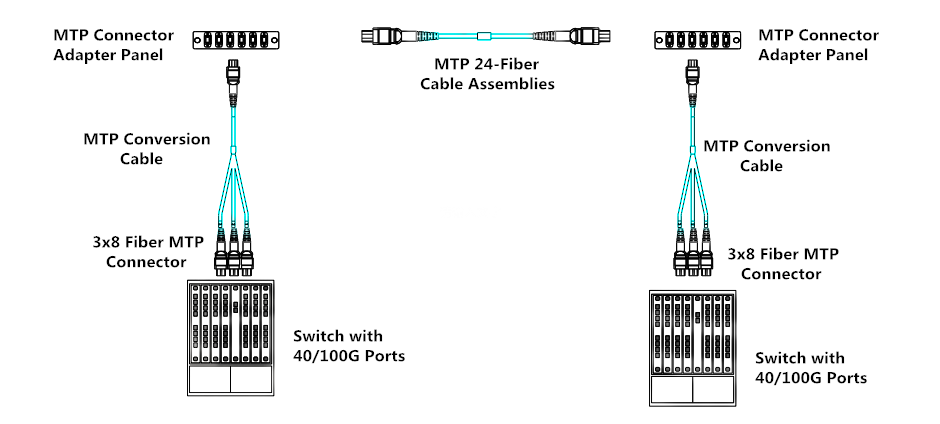
The cabling solution for 40G/100G conversion with 1×2 MTP conversion cable is similar to the solution of 1×3 MTP conversion cable.
In the following applications, connecting the 40G transceivers with a 8-fiber MTP conversion cable rather than a traditional 12-fiber MTP jumper, can enscure the 100% backbone fiber utilization and saving cost.

The 40G/100G MTP conversion cables provide a cost-effective cabling solution for upgrading to 40G and 100G networks. All the benefits and features of these MTP conversion harness cables are explained in the article. And the three types of 40G/100G MTP conversion cable which are available in OS2, OM3 and OM4 options are provided in FS.COM. If you want to know more details, please contact us via sales@fs.com.

